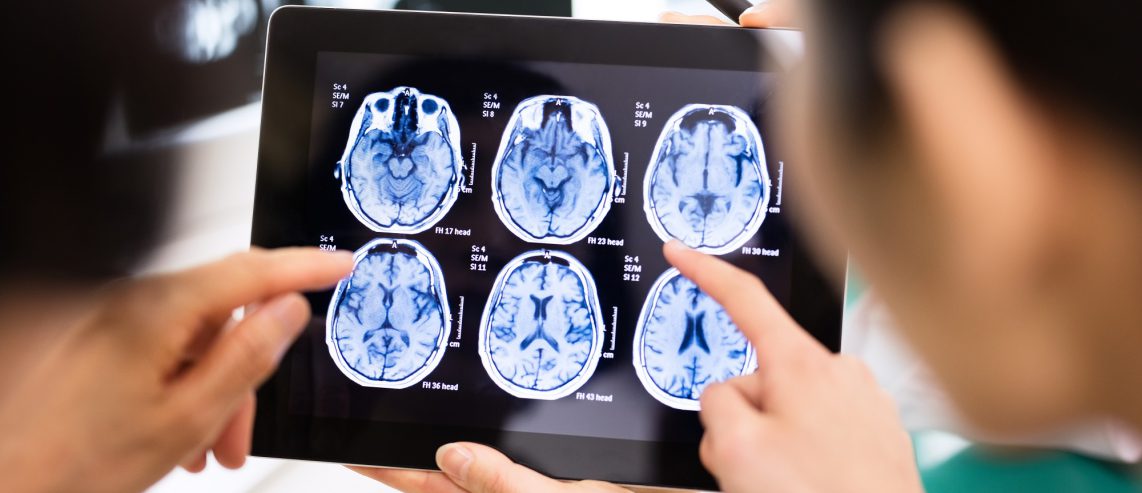There was a time when brain tumor surgery always meant a long, slow recovery. Today, brain surgeons use advanced surgery types that can help you heal faster.
Constantinos (Costas) Hadjipanayis, MD, PhD, is the director of the UPMC Center for Image-Guided Neurosurgery. He says that when choosing which surgery might be the best fit for a patient, brain surgeons consider:
- Tumor size.
- Tumor location.
- Your age and health.
Our surgeons use the least invasive surgery possible when operating on the brain. This helps preserve healthy brain tissue and prevent damage to your brain’s functions. Experts consider how removing a tumor could affect your:
- Language
- Movement
- Senses
- Speech
Types of Neurologic Tumors
Tumors form when cells divide and multiply in unusual ways. Tumors may develop in your brain, spine, or at the base of your skull.
Cancers that begin in the brain are primary brain cancers. Tumors that spread to your brain from another part of your body are secondary brain cancers. These can spread from lung, melanoma, or other cancers.
Not every tumor is cancer. Some brain tumors are noncancerous or benign. But benign brain tumors can also affect how you move or think when they:
- Grow in certain parts of your brain.
- Press on nerves or tissue in your brain.
Never Miss a Beat!
Subscribe to Our HealthBeat Newsletter!
Thank you for subscribing!
You can now select the specific newsletters you'd like to receive.
You are already subscribed.
Subscribe to more newsletters in our email preference center.
Sorry, an error occurred. Please try again later.
Get Healthy Tips Sent to Your Phone!
Treating Brain Tumors Safely
Most people with brain tumors need to be evaluated to determine if they are candidates for surgery. The goal of brain tumor surgery is to remove as much of the tumor as possible in a safe manner.
Doctors use advanced imaging to see the tumor in the brain and understand how it impacts function in the brain. “A tumor’s appearance on imaging helps us understand how to approach it surgically,” Dr. Hadjipanayis says. They also use these tests to find which areas of your brain control certain functions.
Imaging tests for brain tumors include:
- Functional imaging. Imaging before surgery that finds the tumor and how it affects your brain.
- High-definition fiber tracking. 3D images that show how fibers in your brain “talk” with one another. Before and during surgery, these maps help remove tumors safely.
- Magnetoencephalography. A “map” of your brain that experts follow to create a precise brain surgery plan. This helps protect your healthy brain tissue.
“We don’t want our patients to have any neurologic compromise from surgery,” Dr. Hadjipanayis says. “But we want to take out as much of the tumor as possible, so our patients have better outcomes. Mapping locates important pathways so we can avoid them during surgery.”
Brain Tumor Surgery Types
In the past, doctors would make a large opening in your skull to access a brain tumor. This surgery type (craniotomy) still occurs. But today, brain surgeons use new techniques to make the most minor incisions possible.
Modern treatments for brain tumors include these advanced procedures:
Awake craniotomy
In awake craniotomy, you’re awake but don’t feel pain. Your surgeon makes an opening in your skull.
During the surgery, they use electrical impulses to stimulate your brain while asking questions or having you name objects.
Your responses help your surgeon map the areas of your brain that control various functions. This test tells surgeons which parts of your brain to avoid cutting.
Endoscopic surgeries
During an endoscopic surgery, doctors use a thin tube with an attached light and camera to operate on tumors. Endoscopic surgery types include:
- Neuroendoport® and neuroendoscopy surgery. Surgeons make a tiny incision in your skull to reach tumors deep in the brain. Experts can then remove colloid cysts in areas filled with fluid (ventricles) or brain tumors in your brain’s functional tissue (parenchyma).
- Endoscopic endonasal approach. Surgeons insert an endoscope through your nose and sinuses to access tumors. Surgeons use this approach to treat skull base tumors and tumors near the top of your spine.
Fluorescence-guided surgery
Before fluorescence-guided surgery, you drink a liquid containing a special dye (Gleolan®). The dye circulates through your blood and into your brain where it is taken up by the brain tumor.
The dye makes the brain tumor glow under fluorescent light. This helps the surgeon identify the tumor by its violet-red appearance in order to remove it safely.
Laser interstitial thermal therapy
Laser interstitial thermal therapy is also called LITT or laser ablation. In LITT, surgeons use MRI imaging to see tumors deep in your brain.
They make small incisions in your skull to target the tumor with a laser. The laser delivers very high heat to destroy the tumor. With LITT, hospital stays are often shorter, notes Dr. Hadjipanayis.
Robot-assisted exoscope surgery
In robot-assisted exoscope surgery, surgeons control a robotic high-definition digital imaging system with their voice. The surgeons can see brain tumors more clearly with high magnification that permits them to safely remove the tumors. “The exoscope allows us to remove the tumor in a way that doesn’t impact the surrounding brain and structures,” says Dr. Hadjipanayis.
Microsurgery
During microsurgery, surgeons use high-powered operating microscopes and make small incisions. They insert tiny (microsurgical) tools to remove tumors near blood vessels or nerves.
Gamma Knife® radiosurgery
Surgeons use powerful targeted radiation beams to treat brain tumors with no incisions. Gamma Knife helps spare healthy brain tissue and protect brain function that surrounds brain tumors. Gamma Knife is a good option for cancers that have spread to the brain, Dr. Hadjipanayis says.
We also use the Gamma Knife to treat benign tumors of the brain and skull base with very high rates of tumor control over the life of the patient.
What Happens After Brain Tumor Surgery
Your brain tumor surgery recovery depends on the type of surgery you have. If surgeons removed your tumor with a minimally invasive procedure such as Gamma Knife radiosurgery, you may be able to go home the same day. If you have incisions, you may stay in the hospital for a few days.
You’ll have follow-up visits with your surgeon after brain tumor surgery. You may have imaging tests to confirm your brain is healing as it should.
After brain tumor surgery, you may need other types of treatment. Depending on your tumor type, you may require chemotherapy or radiation therapy. Our brain tumor patients are evaluated by a team of specialists on a regular weekly basis from various specialties that include neurosurgery, neuro-oncology, neuroradiology, neuropathology, and radiation oncology.
You may also benefit from rehabilitation services, like occupational or physical therapy after your surgery, Dr. Hadjipanayis says.
Sources
About Neurosurgery
The UPMC Department of Neurosurgery is the largest academic neurosurgical provider in the United States. We treat conditions of the brain, skull base, spine, and nerves, including the most complex disorders. We perform more than 11,000 procedures each year, making our team one of the most experienced in the world. Whether your condition requires surgery or not, we strive to provide the most advanced, complete care possible. Our surgeons are developing new techniques and tools, including minimally invasive treatments. Find an expert near you.

